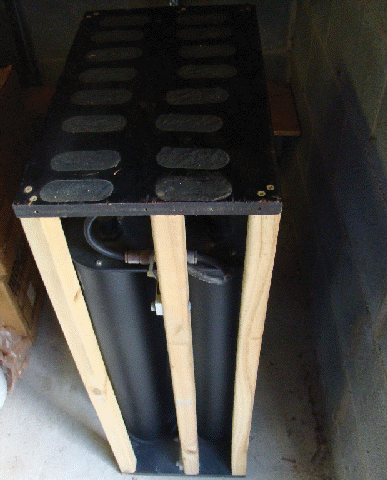Description: Duplexer made for 1.3 to 30 MHz on one port and 49-470 MHz on the other port. Typical port has a coax pigtail.
 Duplexers consist of extremely higher-Q cavities whose resonant frequencies are determined by mechanical components, in certain the tuning rod. The rod is typically made of a material that has a limited thermal expansion coefficient (such as Invar). Detuning of the cavity by environmental modifications introduces unwanted losses in the antenna program.
Duplexers consist of extremely higher-Q cavities whose resonant frequencies are determined by mechanical components, in certain the tuning rod. The rod is typically made of a material that has a limited thermal expansion coefficient (such as Invar). Detuning of the cavity by environmental modifications introduces unwanted losses in the antenna program.
In addition, due to the fact of the higher-Q nature of these cavities, the insertion loss of the duplexer increases when the signal is not at the peak of the filter response. This indicates, in sensible terms, that significantly less energy is radiated for a provided transmitter output power.
Also, the drift in cavities in the receiver line benefits in increased system noise figure, decreasing the sensitivity of the repeater. As the frequency separation in between coaxial cable connectors types the receiver and the transmitter decreases, the insertion loss of the duplexer reaches certain sensible limits. At 144 MHz, the minimum insertion loss for 600 kHz spacing is 1.five dB per filter.
Testing and employing duplexers needs some specific considerations (particularly as frequency increases). Since duplexers are extremely high-Q devices, they are quite sensitive to the termination impedances at their ports. A high SWR on any port is a severe difficulty, simply because the apparent insertion loss of the duplexer will enhance, and the isolation may possibly appear to lower. Some have found that when duplexers are employed at the limits of their isolation capabilities, a tiny adjust in antenna SWR is adequate to cause receiver desensitization. This happens most often under ice-loading circumstances on antennas with open-wire phasing sections.
If you beloved this posting and you would like to acquire far more details about Duplexers: Theory and Tune Up – The SEITS HomePage kindly go to our own internet site.
